New
Click-to-Instagram Direct Ads

At QuickReply.ai, we work with DTC brands to build their WhatsApp growth operations from scratch.
Even if they have an existing WhatsApp playbook.
(disclaimer: if you are new to the world of WhatsApp marketing, check out these QuickReply case studies to know why DTC brands are flocking to WhatsApp)
An objection that we predictably face when we inform our customers that we will build their WhatsApp playbooks from scratch is - “but we have established some systems already”
We get it. Most DTC brands fall into one of the three segments in the context of WhatsApp marketing
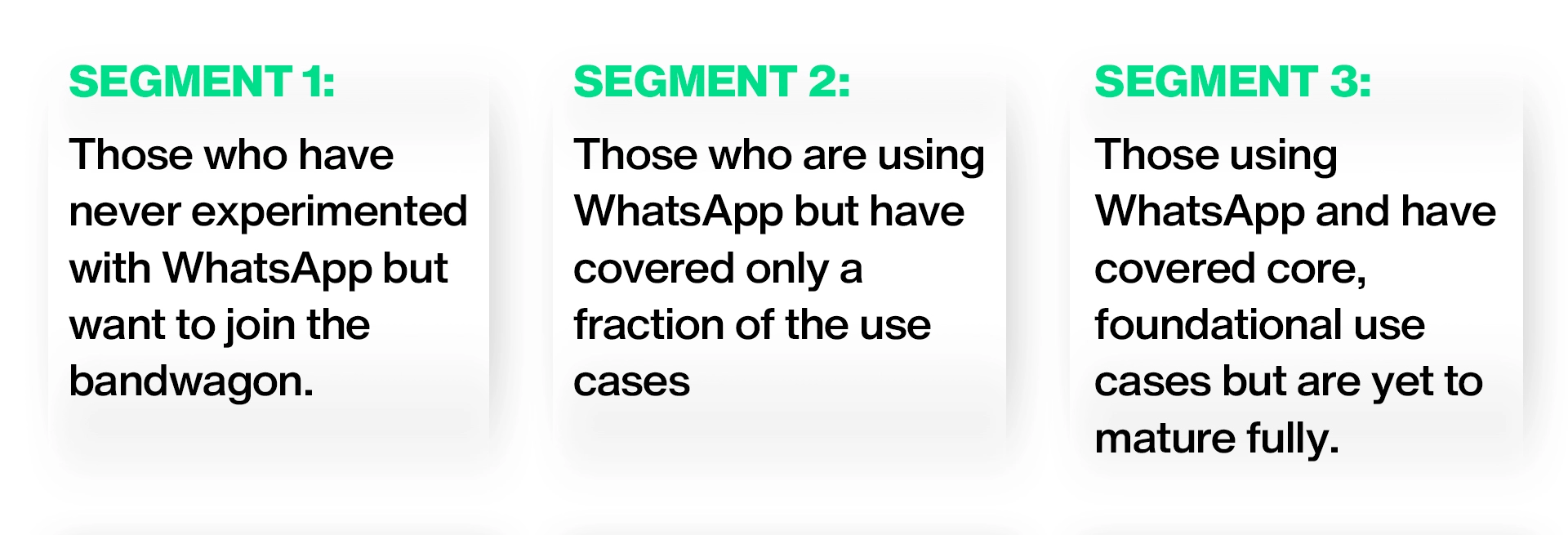
The needs/prerequisites of folks who fall in Segment 1 are vastly different from folks who fall in Segments 2 and 3. While one segment is taking driving classes, the other two segments have already clocked hundreds of miles.
The caveat, though, is - it's easy to get from Segment 1 to Segment 3 in 90 days. All you need is a detailed SOP that covers all the nuts and bolts demanded from Growth teams when they establish WhatsApp as a new channel.
This essay lists all the essentials for you to accelerate from Segment 1 to Segment 3. The essay highlights tools, methods, and use cases to deploy across your growth spectrum.
Almost all DTC stores strive to collect email addresses of visitors. Whether it is a conscious choice to push email popups strategically or pre-embedded forms in Shopify themes, it's a given that marketers want that pot of gold email.
Your first step is to replace email popups with those that grab phone numbers to push WhatsApp messages, later.
Here’s why - email open rates stand at 25% while WhatsApp messages open at >90%+
Which means 3X eyeballs on everything. 3X eyeballs on your abandoned cart campaigns. 3X eyeballs on general marketing campaigns. 3X eyeballs on review campaigns. 3X on every bit of communication you can conjure.
While starting with popups is a fine first step, there are many ways in which DTC brands are collecting phone numbers
1. Abandoned carts: Obvious. Folks drop their phone numbers when they plan to check out but abandon them for some reason.
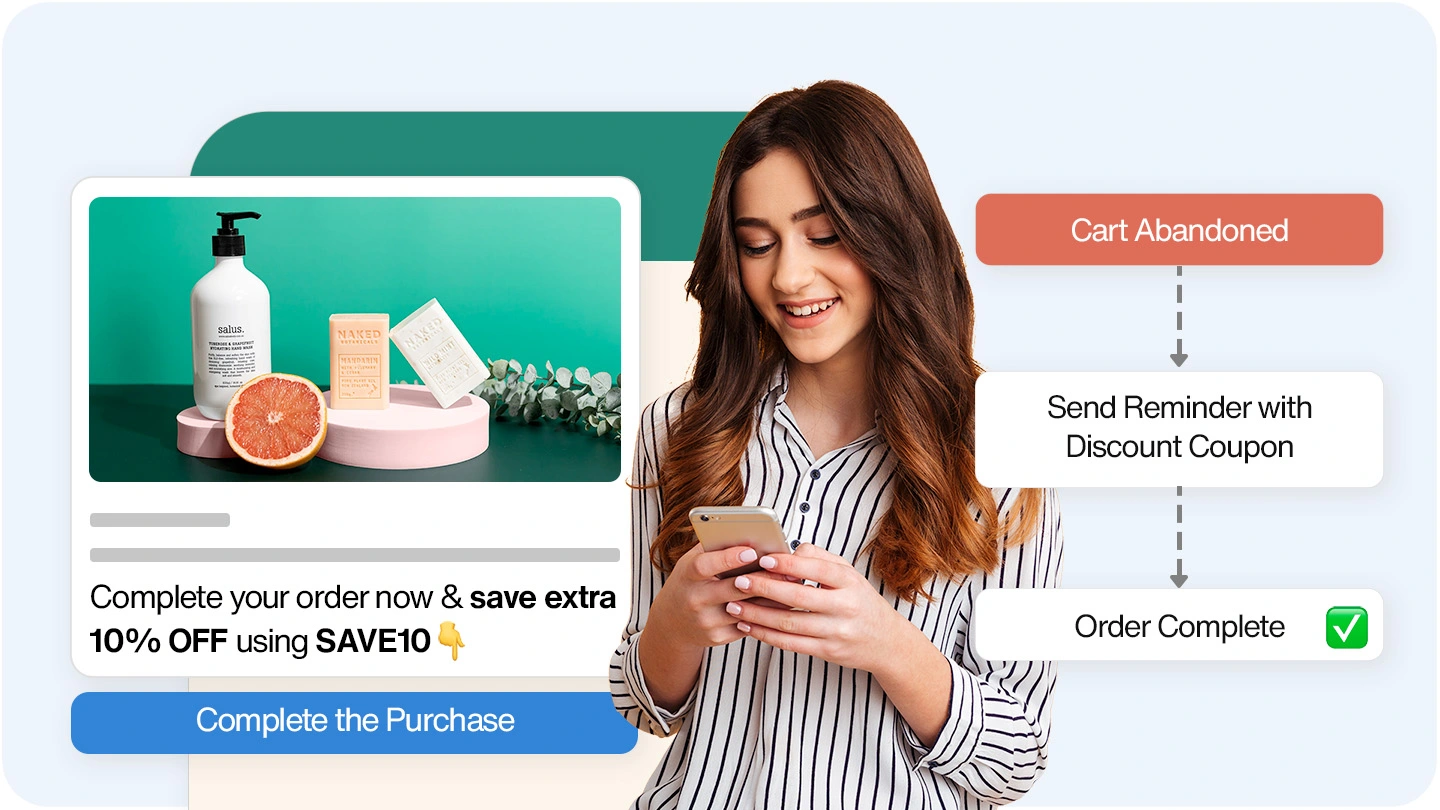
2. Click to Whatsapp Ads:Meta’s brand new ad format lets brands direct ad clicks to a WhatsApp inbox, not landing pages. When used judiciously, CTWA ads are propane-fuel for your growth jet. Here’s how Meadbery used CTWA to stand out in their audience’s feed.
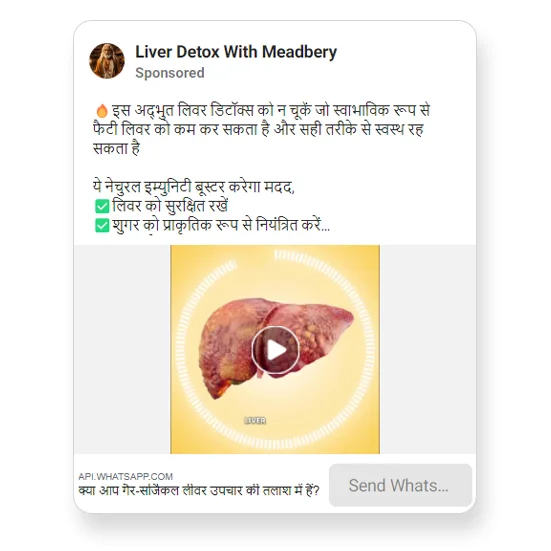
3. Push QR codes on your packaging: Marketplaces like Amazon, Flipkart, and Nykaa are notorious for stripping data away from the hands of brands. They’d like to reserve all the 1st party data like phone numbers and emails for themselves in pursuit of their walled advertising gardens. Adding your WhatsApp QR code on the packaging allows you to engage buyers later. Here’s how Boldfit used QR codes to increase its contact list.

4. Paste QR codes in your brick-and-mortar stores: Paste WhatsApp QR codes across your brick-and-mortar store liberally. Nudge store visitors to drop their store visit feedback over WhatsApp
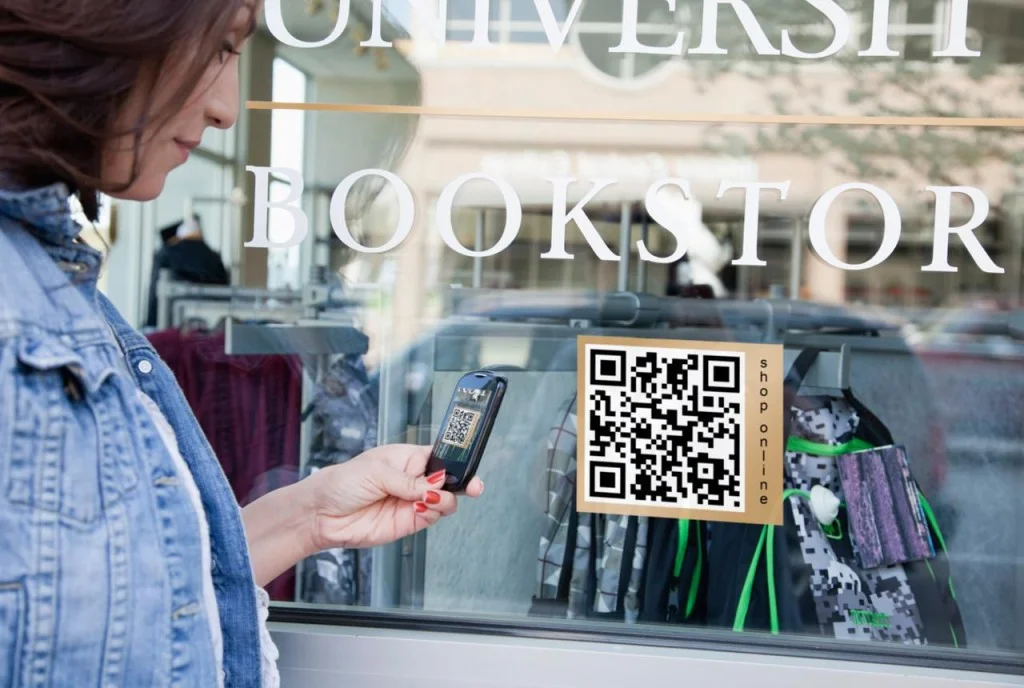
5. Initiate a WhatsApp referral mechanism for your loyal customers: Kudos if you have already integrated your Shopify store with loyalty software. If not, get cracking. Members of loyalty programs generate 12% to 18% more revenue than non-members. The icing on the cake - get your loyal customers to forward your store’s links with their contacts on WhatsApp. Their referrals get discounts on their first purchase while your customers rake more points.
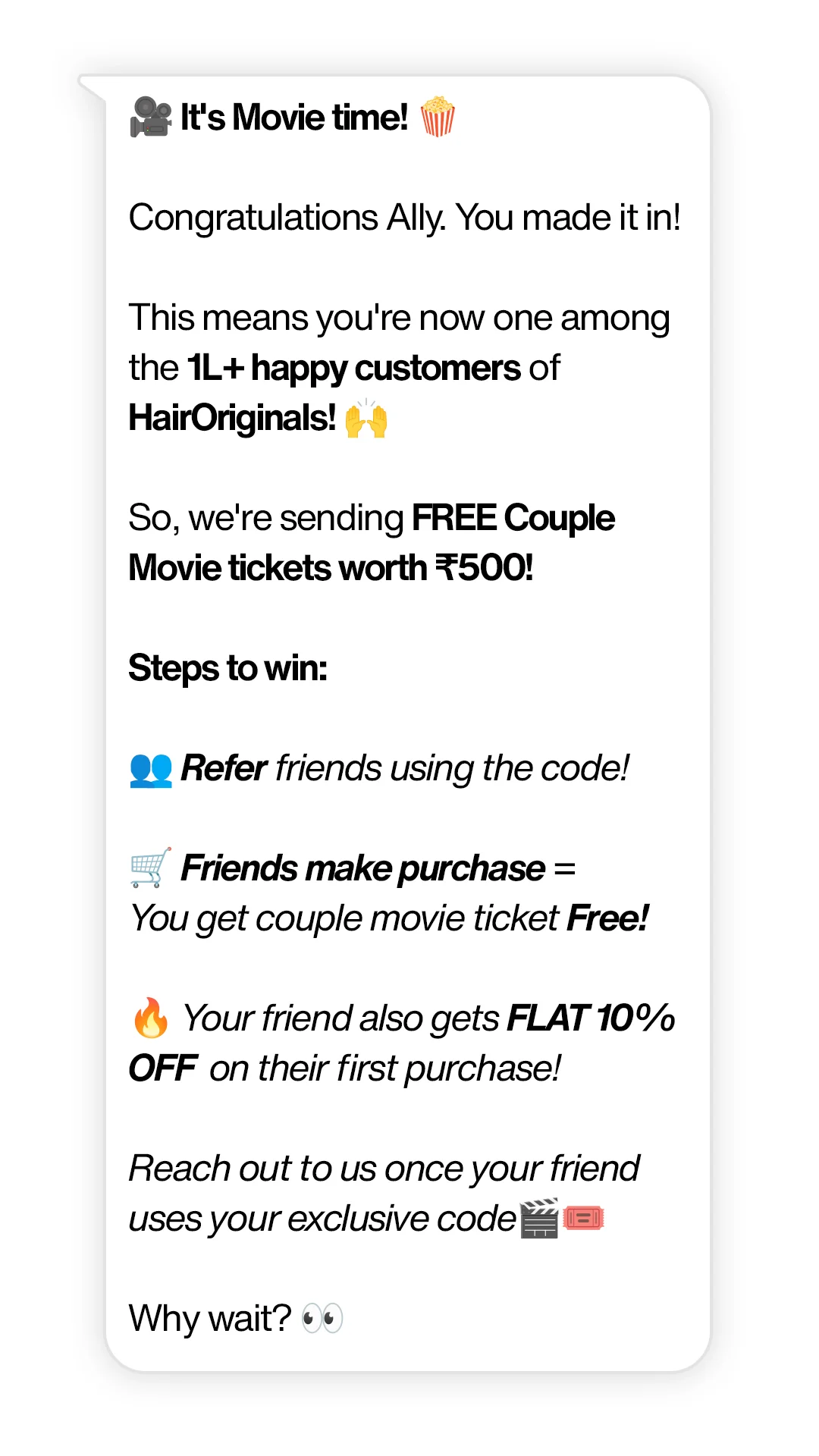
QuickReply.ai is equipped to scale your data acquisition playbook. It has a selection of popups/widgets to choose from. Additionally, it is engineered to handle thousands of QR code redirects. It also comprises of a CRM to manage leads that initiate chats with you via Click to WhatsApp Ads.
Now that you’ve established a rigorous data collection system, the logical next step is to warm their cockles in your brand’s radiance (pardon me for I got carried away)
To achieve this, mature WhatsApp marketers initiate a “welcome sequence” for every new contact they enlist. Think of this as your usual email drip series but with the WhatsApp advantage.
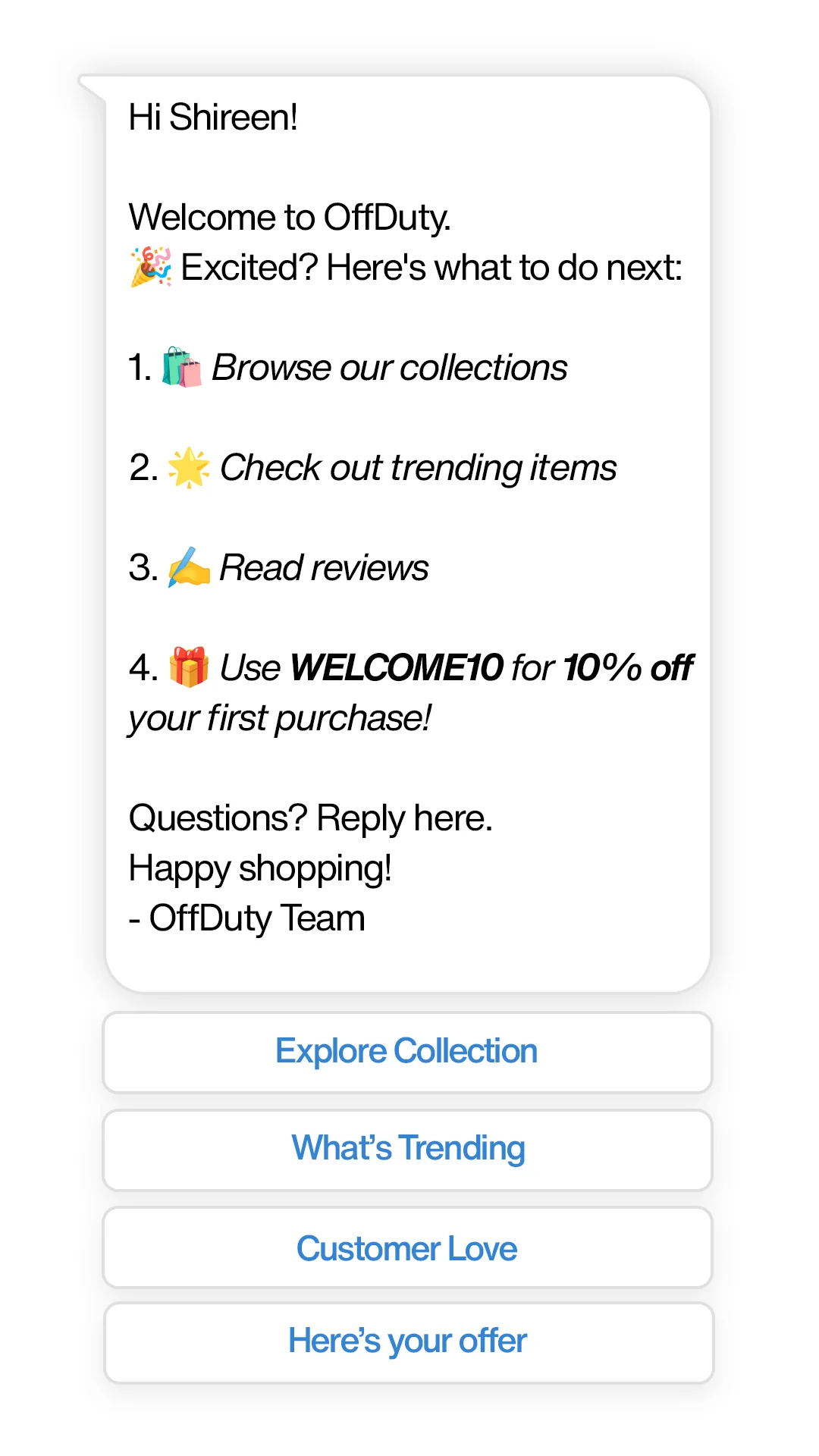
Having taken care of acquiring new contacts and welcoming them into your hold, it's time to establish the most profitable WhatsApp workflows for DTC marketers.
Since abandoned cart recovery is one of the most popular WhatsApp automations, there are ample proof points that have demonstrated success. For example, how Attic Salt doubled their cart recovery rates. Or how Dermazone recovered carts worth 1 Million$. Or how Dryza’s ROI on abandoned carts is a whopping 1140X.
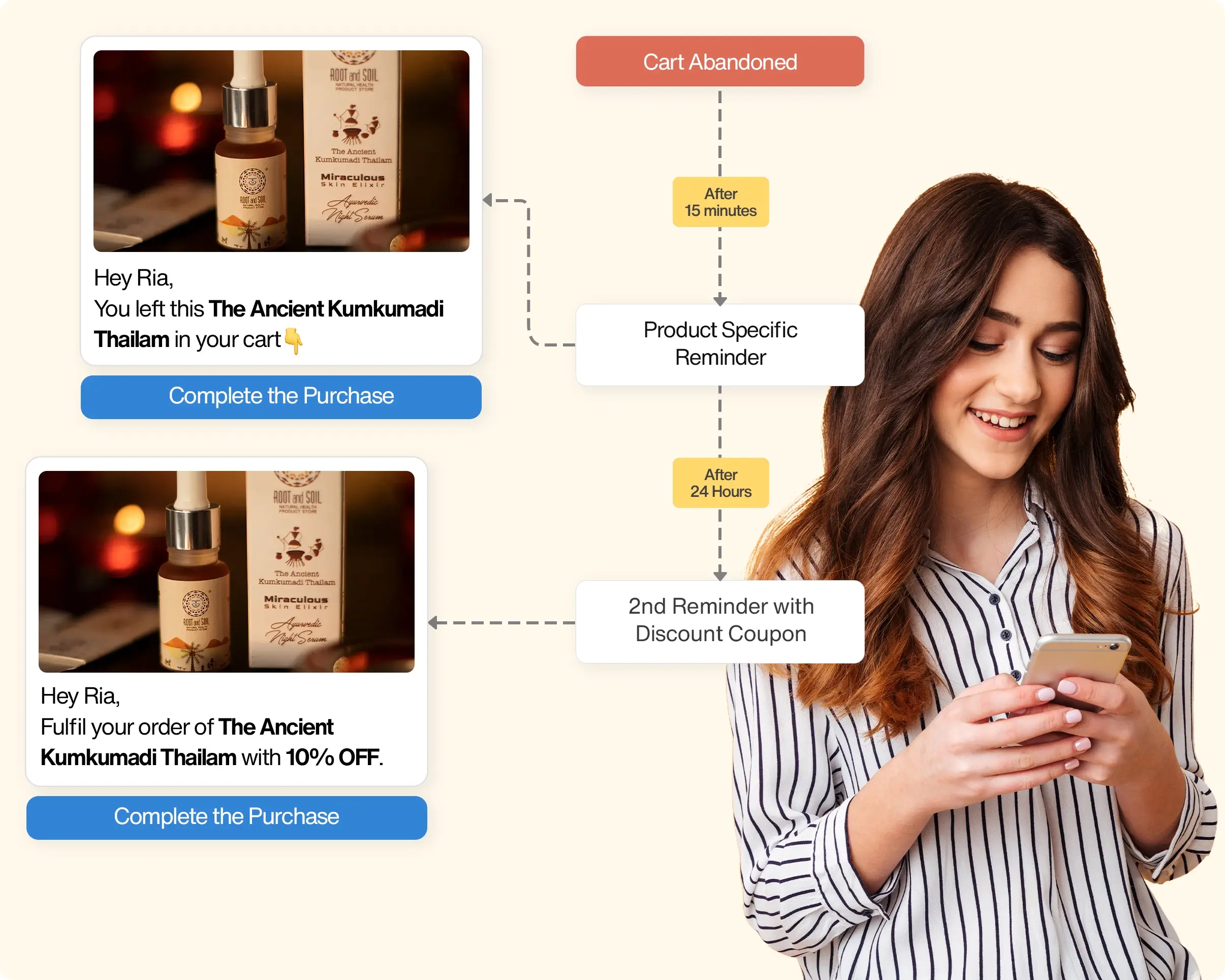
WhatsApp cushions you against this uncertainty by letting you trigger a COD to Prepaid flow.
The mechanics work like this - they place a COD order and an instantaneous WhatsApp alert is triggered
a)That rewards pre-payment by offering a discount - This is how Auric converted 27% of their COD orders to prepaid
b)That nudges customers to confirm their COD purchase before dispatch has begun
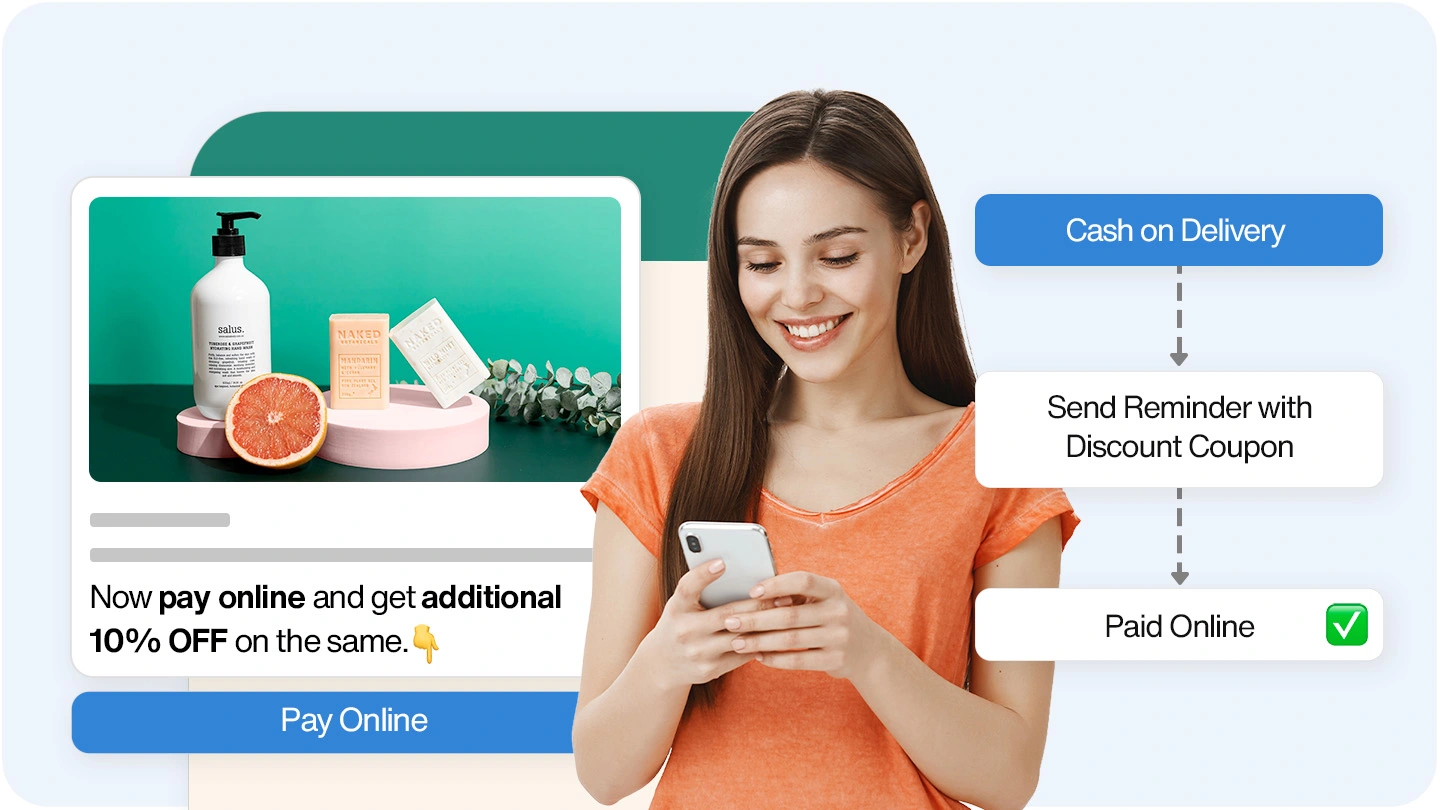
3. Configure personalized and contextual sequences for new visitors vs returning customers
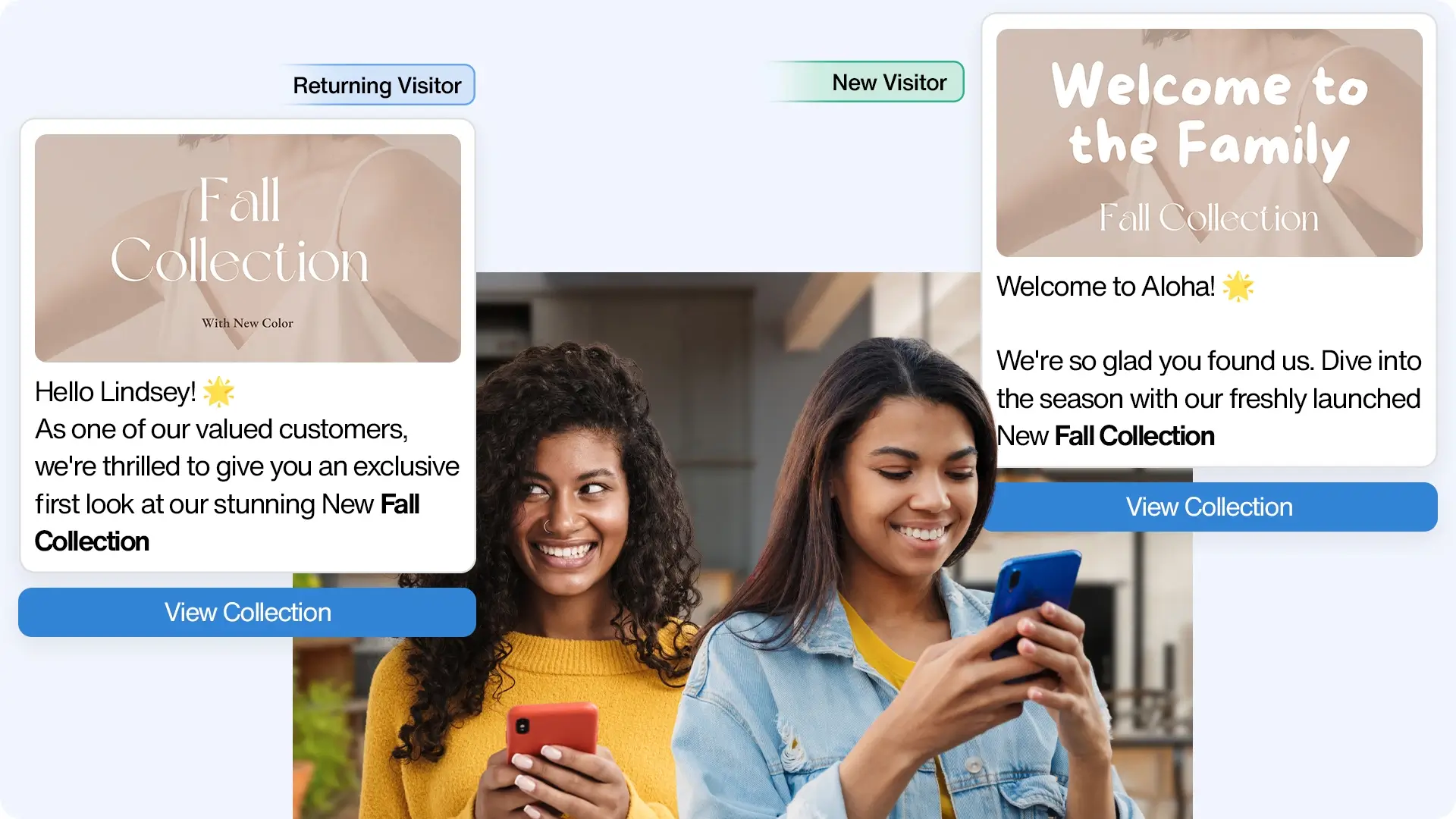
This stage is devoted to building WhatsApp systems for retention and engagement, leading to higher LTV and Purchase Frequency from your existing customer base.
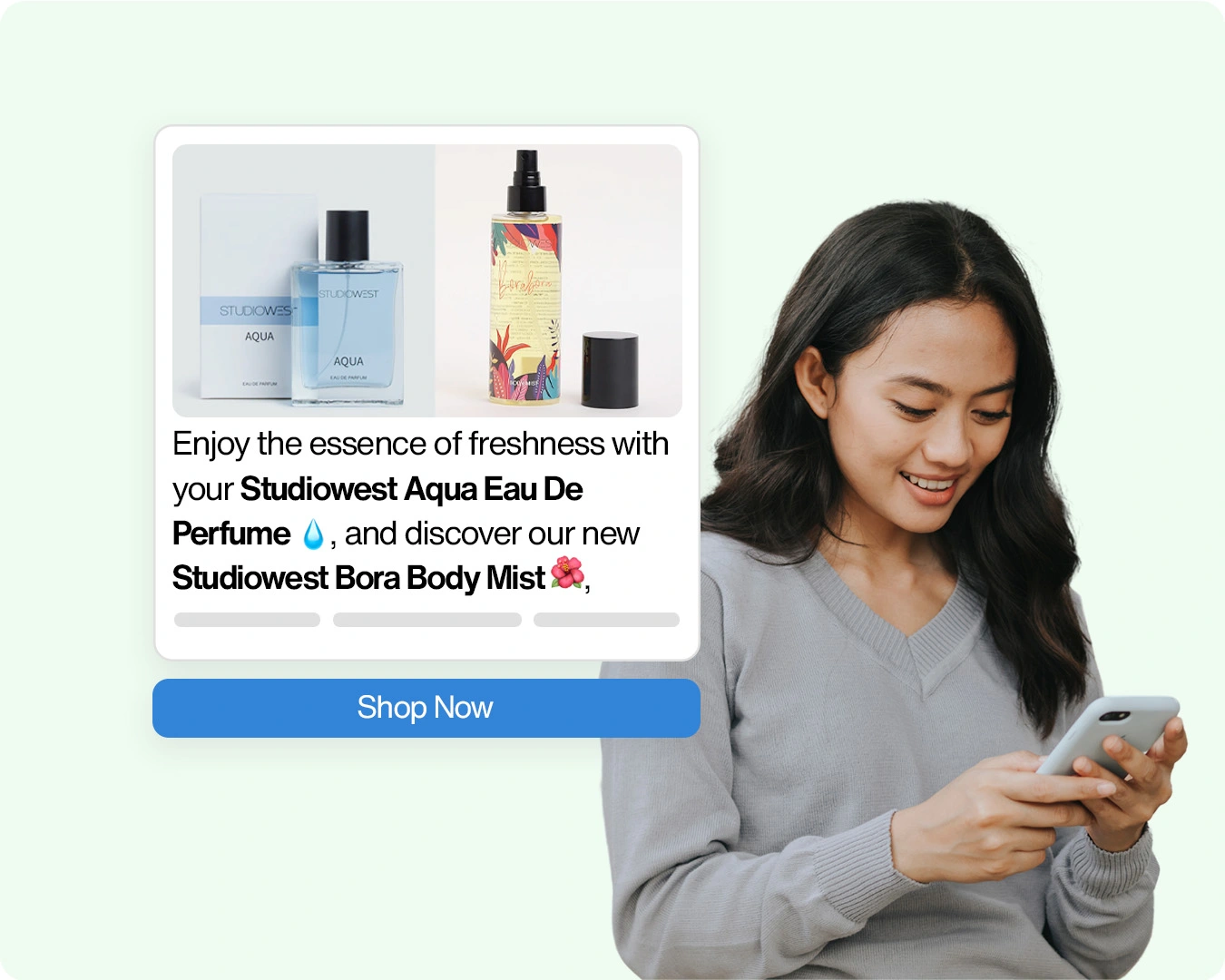
QuickReply has an elaborate Workflow builder that syncs with your product IDs. Just apply the logic behind nudges, setup a time trigger, and watch the upsell/cross-sell motion run on auto-pilot.
2. Setup a product review trigger: Configure a WhatsApp trigger that nudges customers to create reviews for your products. These reviews could be
a. Published on review sites or marketplaces
b. Published on their socials
c. Delivered directly to you on WhatsApp. Just like your typical WhatsApp messages with video or audio that you can publish on your web later.
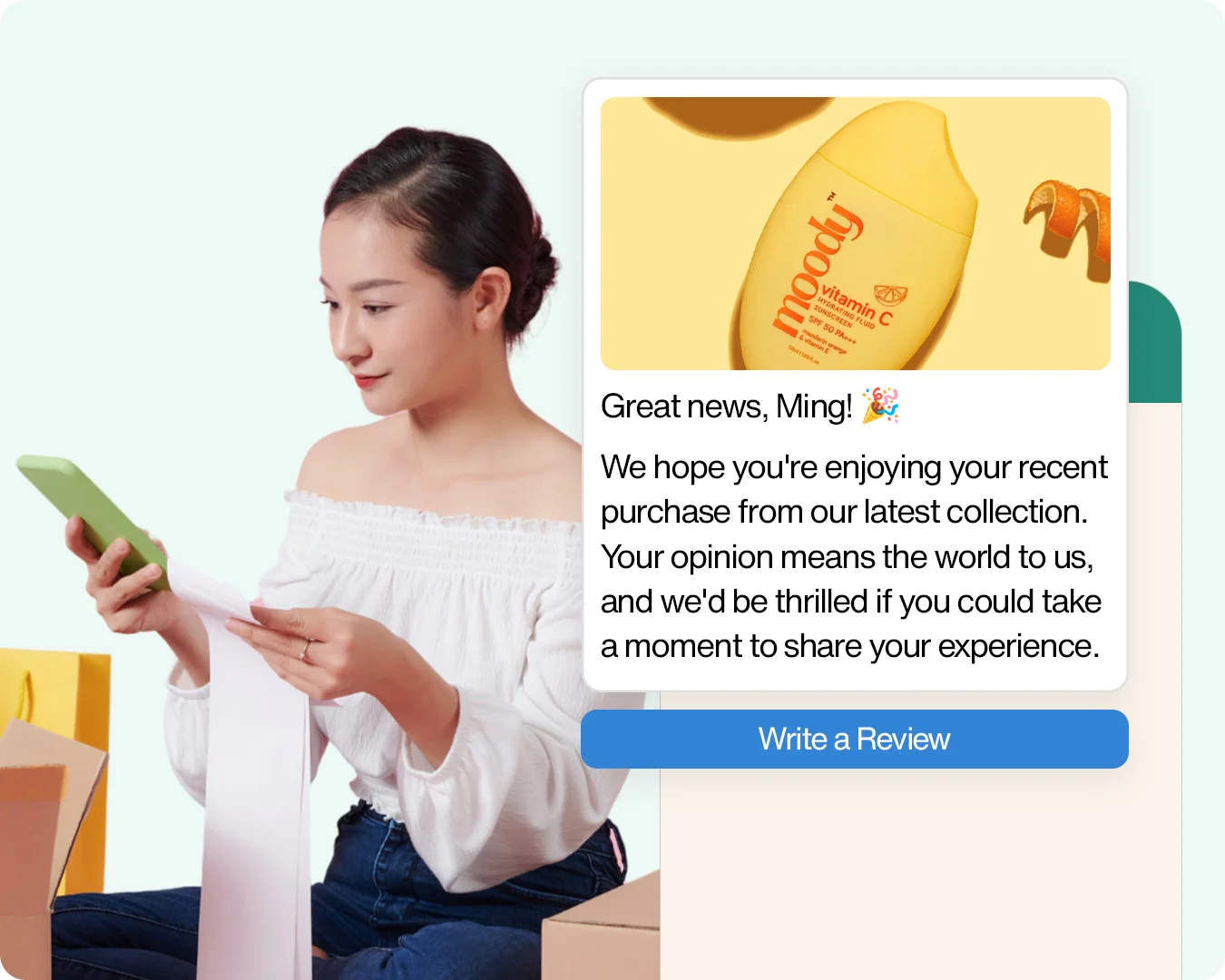
Just like upsell/cross-sell motion, you can create automated WhatsApp workflows that nudge customers to review your products after a time delay.
3.Invite them to your loyalty program: Build WhatsApp triggers to invite customers with a higher-than-average purchase frequency to your loyalty programs. Configure this trigger right after they’ve placed a recurring order that meets your program’s minimum-order bar.
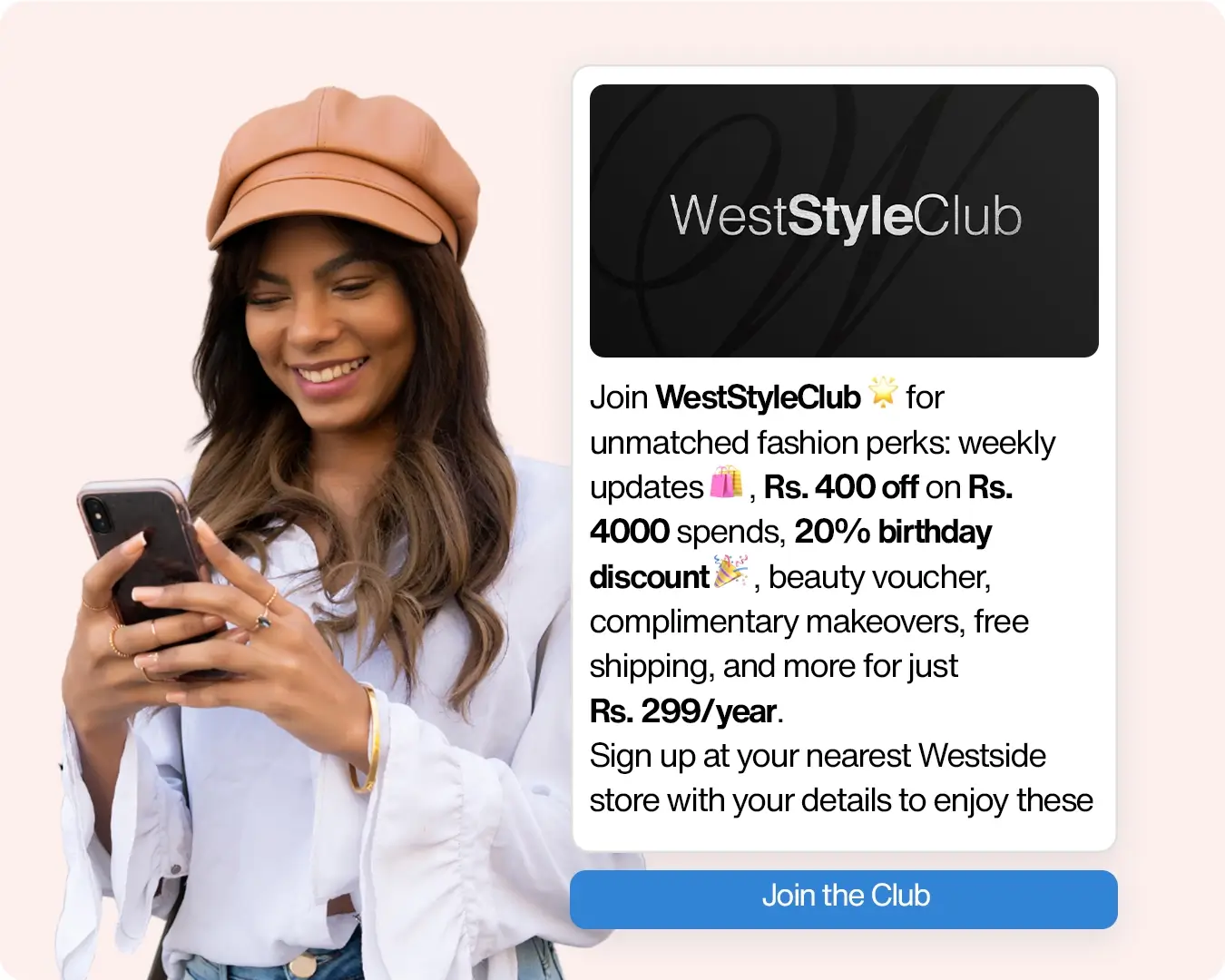
This phase is devoted to setting up essential customer delight and trust hooks to make them feel that they are in the right hands.
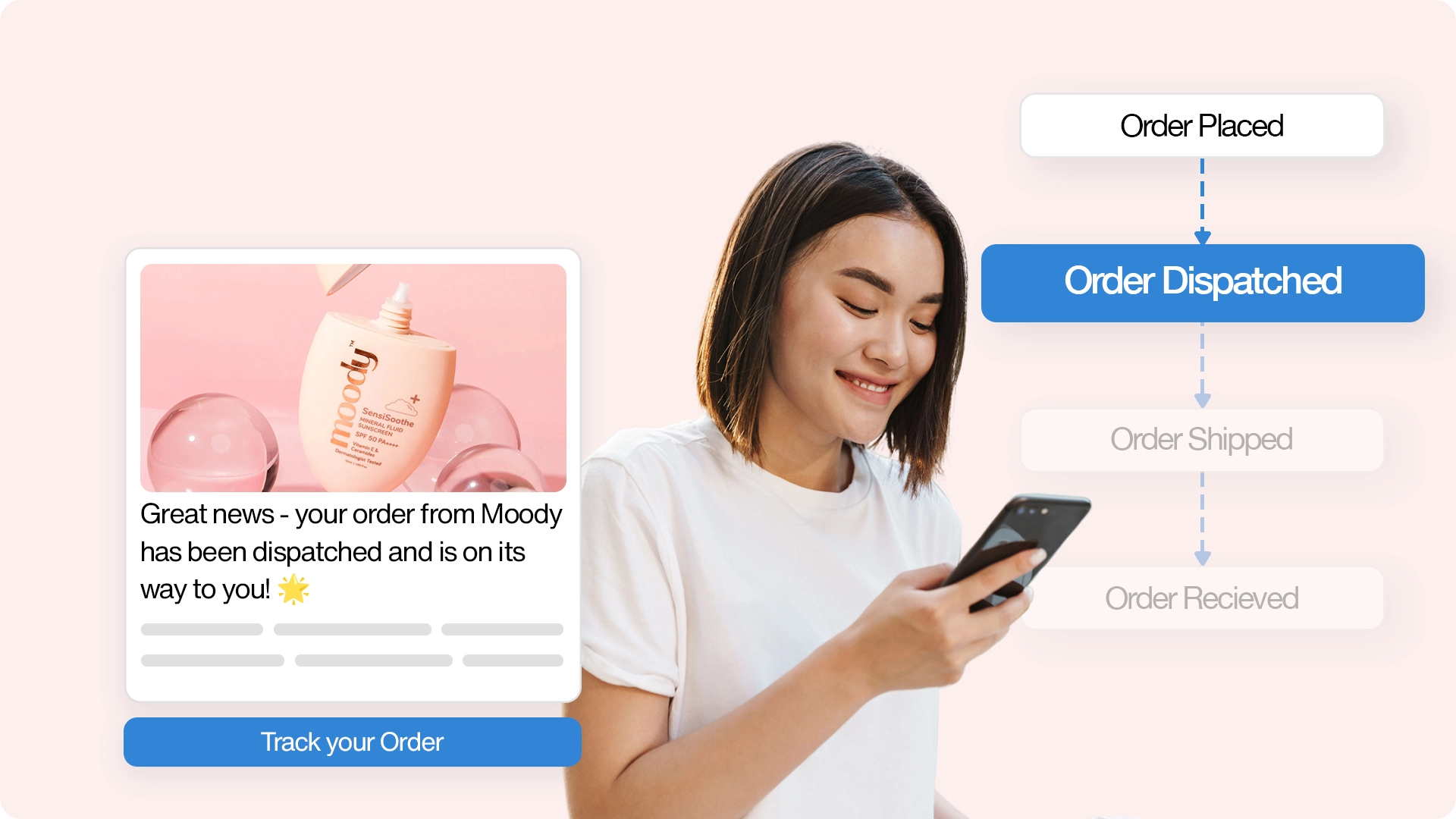
2.Configure bots for post-purchase support: Just like delivery updates, configure post-purchase support bots that handle returns, replacements, and exchanges.
The way these bots work is via two paths.
First path: Simple keyword-based bots. Shoppers type their query and the bot responds with templated answers if it picks a relevant keyword in the query.
Second path: NLP bots: Bots are trained to identify the sentiment behind a question in free form and respond with answers that match the sentiment. For example, a keyword-based bot will read the question “i want to exchange my order”, pick up the word “exchange” and either answer with a text or offer a set of options as the next step.
QuickReply offers both approaches via its chatbots.
3.Upload your product catalog on WhatsApp: Did you know WhatsApp lets you upload your product catalog? Leverage this feature to flaunt your best sellers on WhatsApp and give your shoppers a taste of your collection. Pro-tip: Even though you can upload all your products, it’s not advised to do so. The full range of products will overwhelm your buyers in a mobile view.
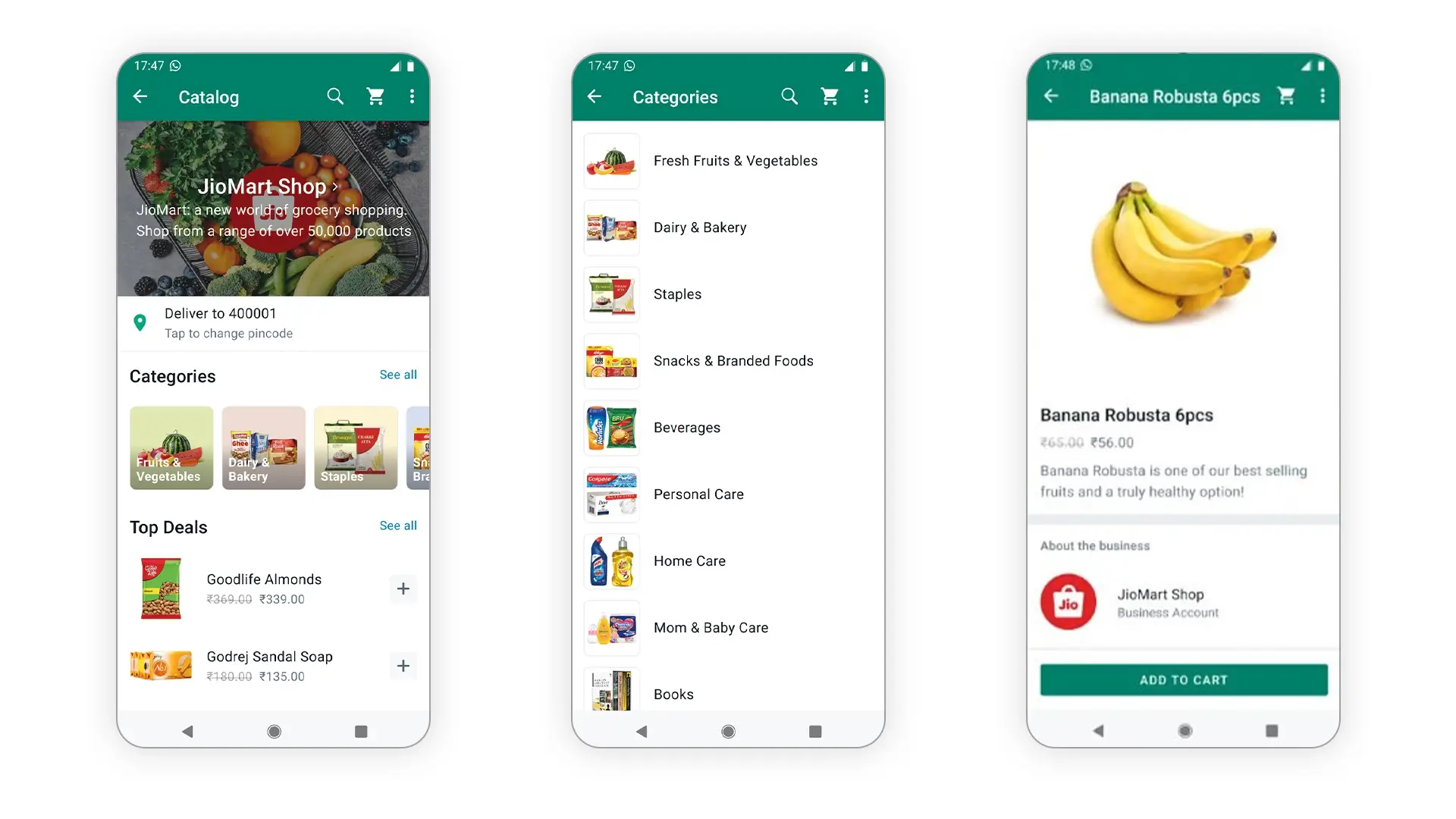
If you want more information on uploading catalogs, we encourage you to read these blogs for more detail - [1][2]
This phase is devoted to leveling up your WhatsApp maturity. In our experience, just 1% of digital businesses have reached this stage.
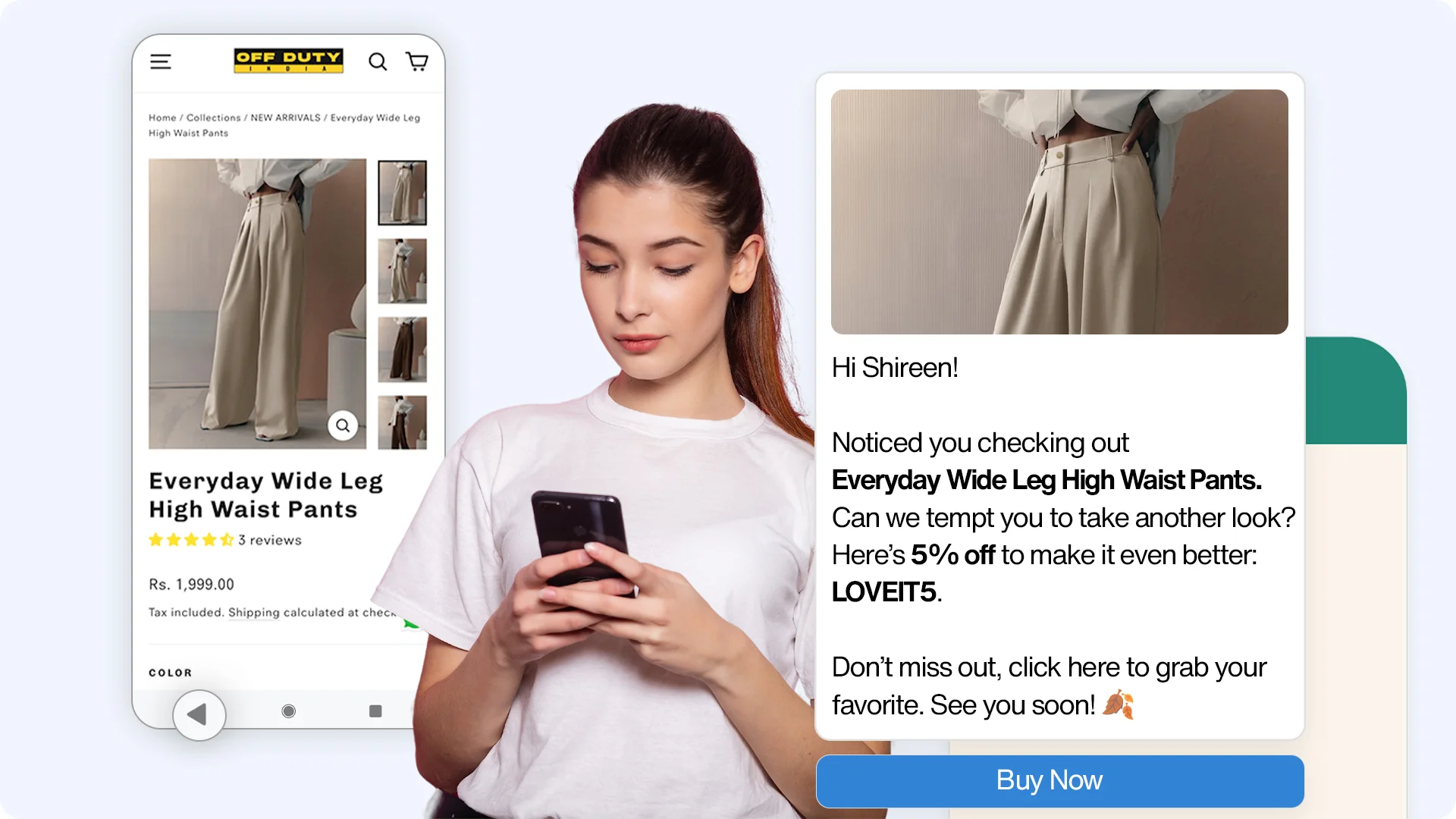
2.Compile advanced segments for behavioral targeting: Combine multiple attributes to refine your behavioral targeting. A water-tight Shopify integration with your WhatsApp messaging provider is the foundation for this workflow. Some examples of this deployment include
a. Targeting shoppers from a city [X] AND who have an AOV > Y: WhatsApp broadcast campaign inviting them to an event hosted in their city.
b.Gifting shoppers who have an AOV > Y AND Purchase Frequency > X: Pampers your shoppers who have above average AOV and Purchase Frequency numbers
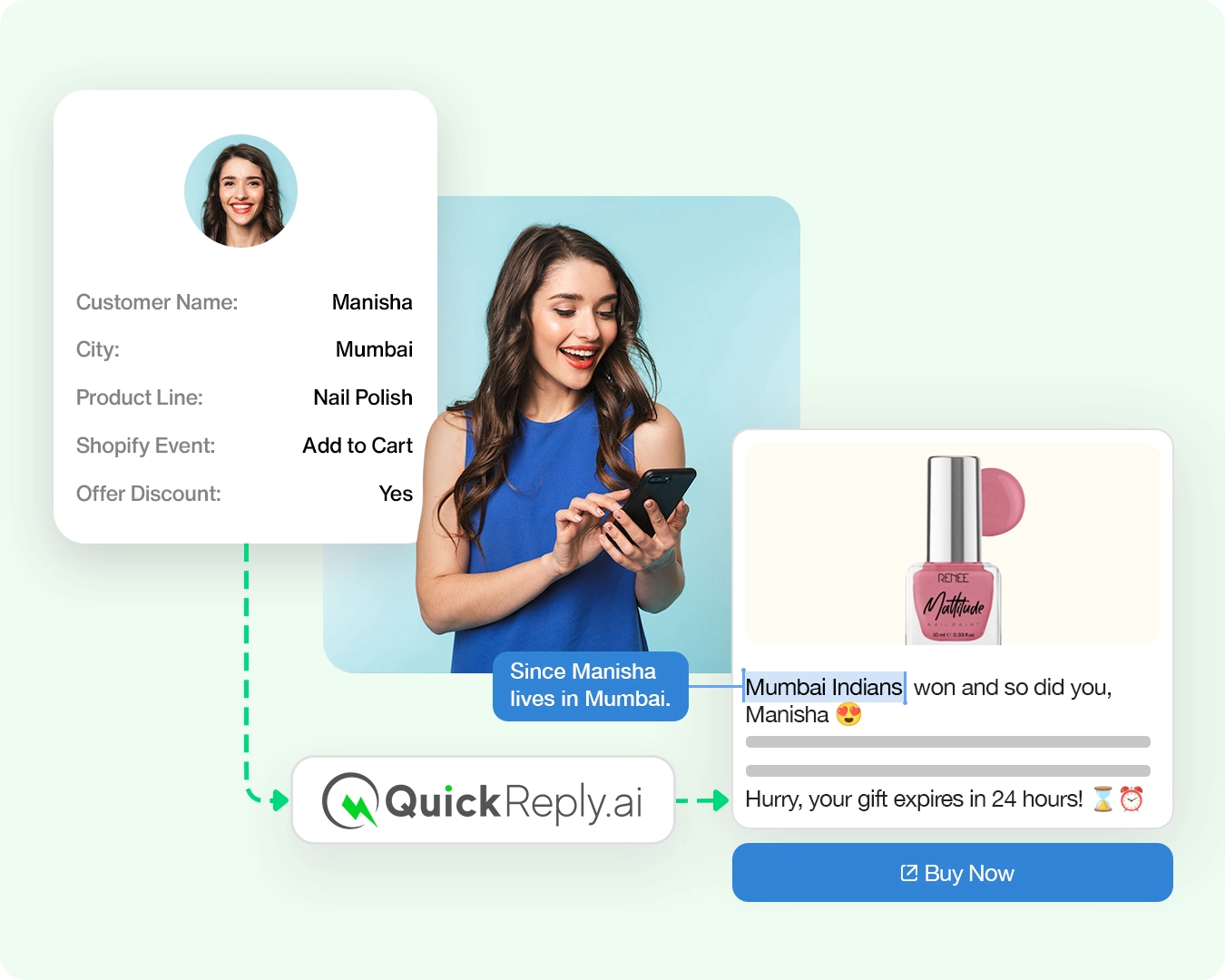
3. Leverage events processing for more “in-the-moment” messaging: For a Direct-to-Consumer (DTC) company utilizing WhatsApp messaging integrated through an events processor like QuickReply, leveraging triggers from 3rd party systems can significantly enhance customer engagement and personalized communication. Here are examples of triggers that can be used
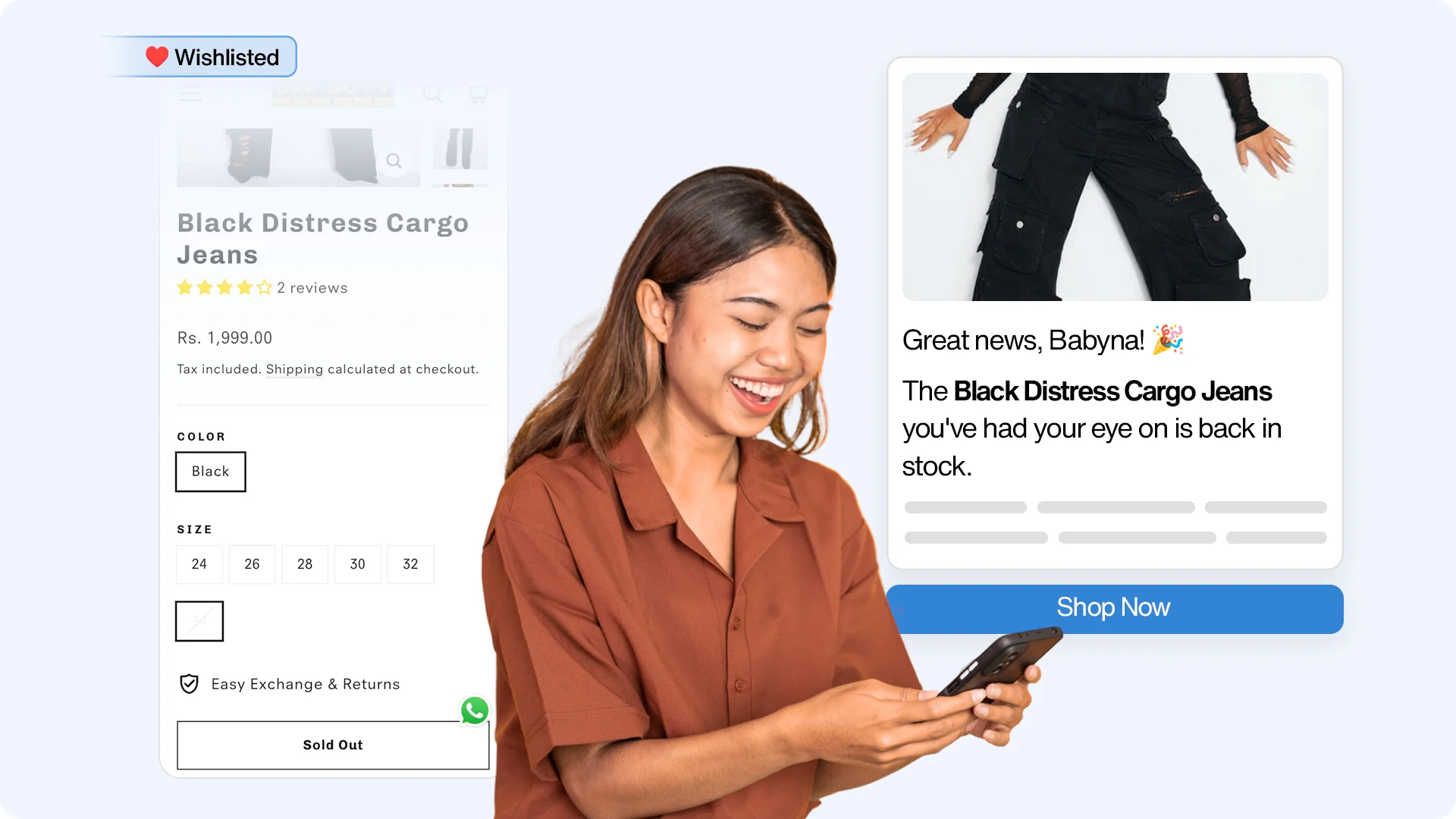
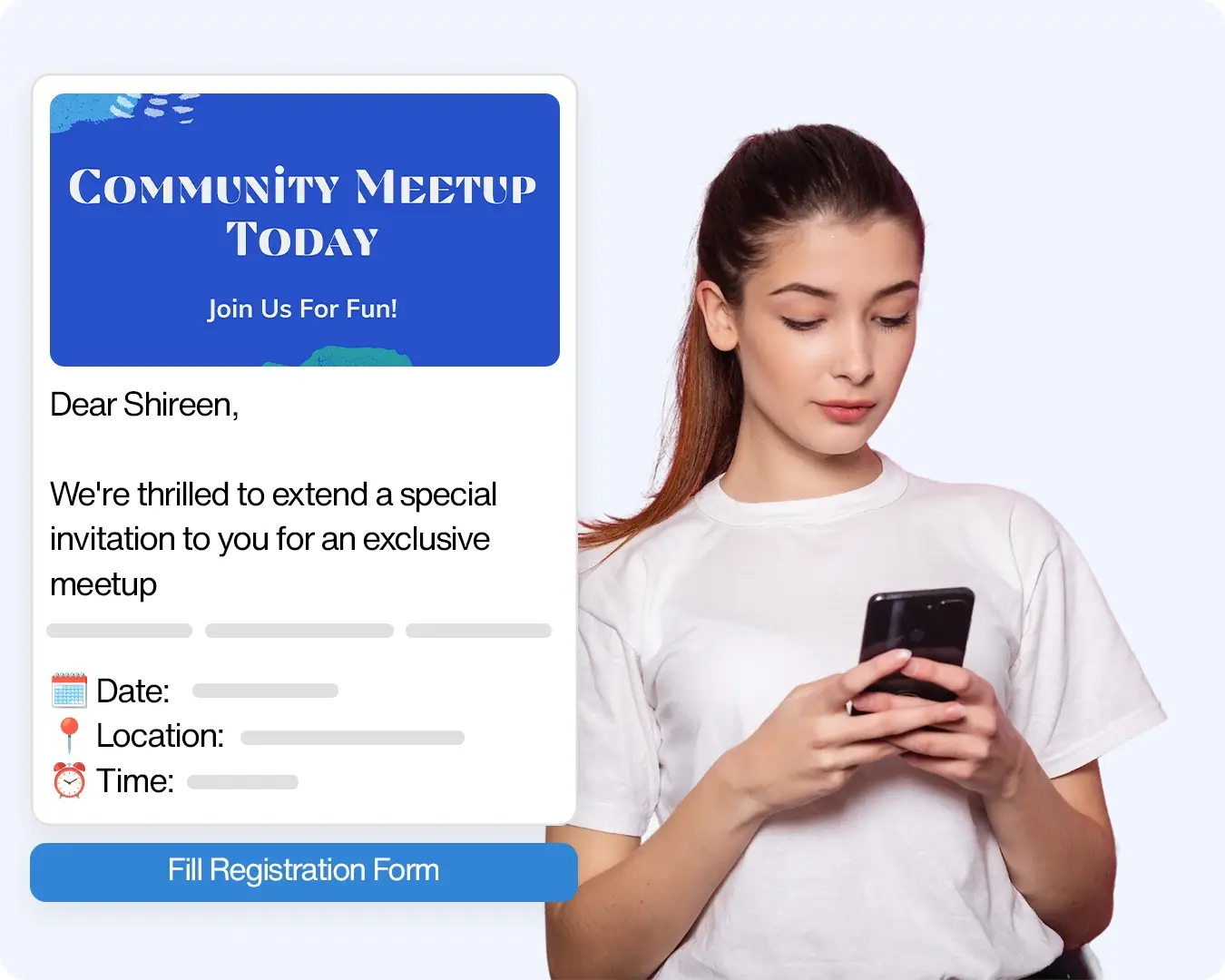
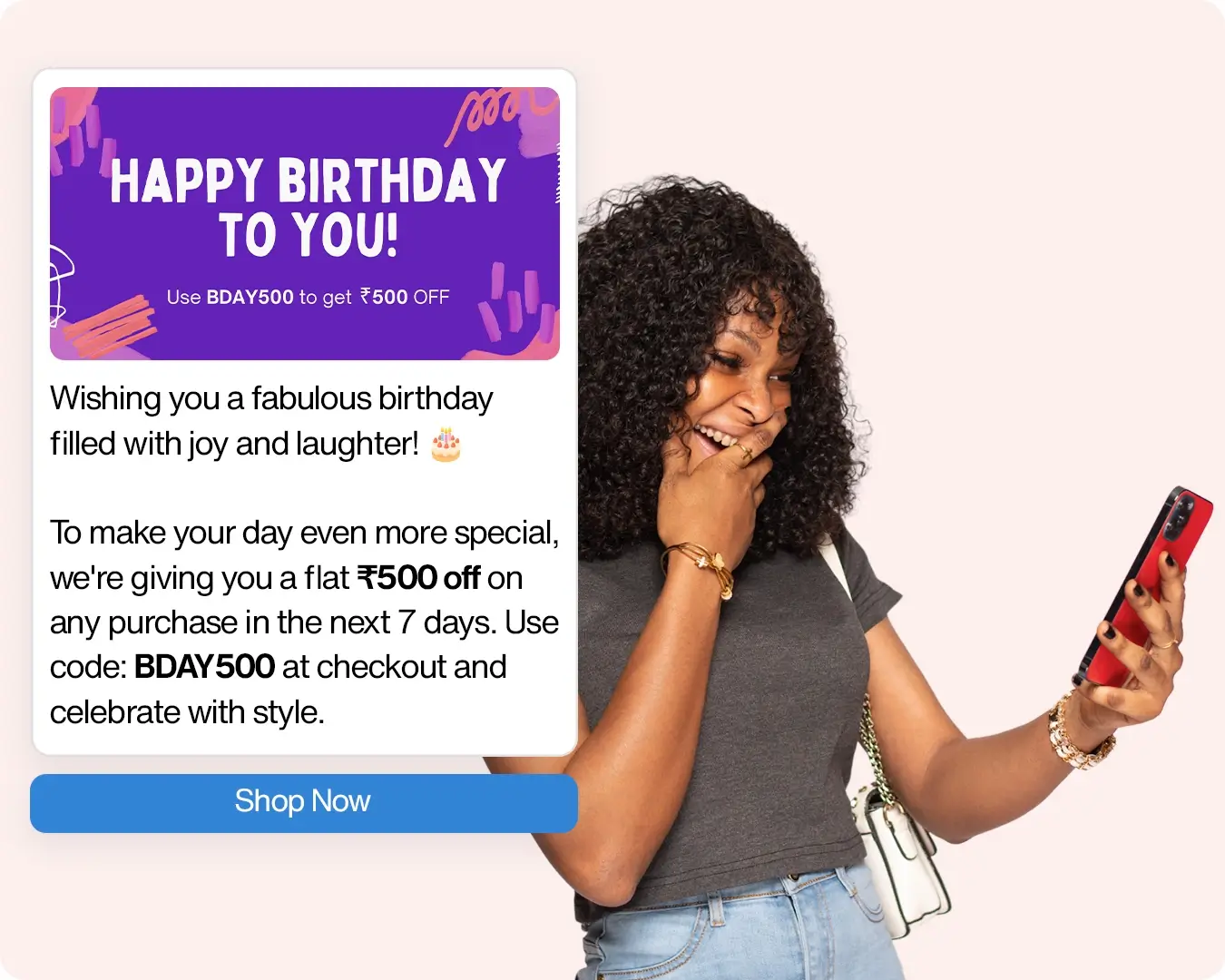
So there you have it. A laundry list of everything you need to do if you are elevating your WhatsApp game.
QuickReply helps DTC brands execute this playbook from scratch. If you are a business looking to know more about the effectiveness of WhatsApp, reach out to us and we will get you rolling.
If you are a business that’s already leveraging WhatsApp but wants to leg up, we’ll identify missing pieces and help you fix them.
Either way, just get in touch and we will take it from there.
Tool and strategies modern teams need to help their companies grow.
Leverage the untapped growth potential of WhatsApp marketing to acquire and retain customers.